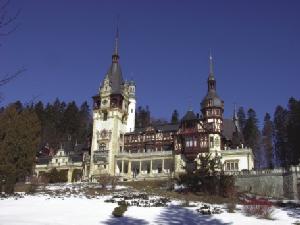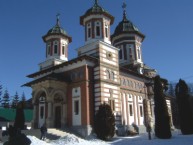Tourism - Trip fit for a king

Wanting to take a historical tour for a weekend? Look no further as we reveal the best places for cultural treats from the Roman age, through the medieval period to the time of Romania's monarchyLocated in the centre of Romania, Transylvania boasts highlights such as the beautiful Prahova Valley, the dramatic Fagaras and Bucegi Mountains and many pretty old medieval and classical cities such as Sighisoara, Cluj, Sibiu and Brasov. Apart from the vampire legends, Transylvania is also famous for its skiing facilities, hiking trails, ancient Roman and Dacian settlements, kingly estates and medieval castles. Day 1: The Hunting Museum of Posada is renowned for its collection of hunting exhibits, including an impressive collection of trophies, many works of arts and a large array of hunting tools. Day 2: Sinaia, a well-known Prahova Valley ski resort and gateway to the Bucegi Mountains, has earned its name from the biblical Mount Sinai in Israel, and is located at an altitude of between 800 and 900 metres. It is also known by the moniker of the 'Pearl of the Carpathians'. Sinaia Monastery, inhabited by some 20 monks, includes a large Orthodox Church (Biserica Mare) dating from 1846, and the smaller, older church (Biserica Veche) from 1695. Located beside the new church is a small History Museum (Muzeul de istorie) in which some of the monastery's old treasures are displayed, including the first translation of the Bible into Romanian (in the Cyrillic alphabet) dating from 1668. Peles is Romania's most famous and well preserved castle. This incredible German Renaissance style palace was built as a summer residence by Romania's longest serving monarch, King Carol I, where the building work began in 1875. The interior decoration is truly amazing with the rooms having been adorned in a variety of different styles by the finest European craftsmen of that time while the materials, furniture and fittings were ordered from the most famous workshops in Europe (with no expense spared). The medieval city of Brasov was built on an ancient Dacian settlement, which started as a German mercantile colony named Kronstadt (Brasso in Hungarian). Piata Sfatului, the central square, is the greatest in the country, lined with baroque facades and pleasant outdoor cafes. Brasov's famed medieval Black Church (Biserica Neagra) is the largest Gothic church between Vienna and Istanbul and its name comes from its blackened appearance after it caught fire in 1689. Brasov is now a large and lively business town and tourist destination, which is only 10km from Romania's most famous skiing resort, Poiana Brasov and only 30km from Bran castle and the Rasnov citadel.  Day 3: Sighisoara (Schassburg in German or Segesvar in Hungarian) is a perfectly preserved medieval town in beautiful hilly country-side. Nine towers remain along Sighisoara's intact city walls, which encircle sloping cobbled streets lined with 16th century burgher houses and timelessly preserved churches. As you enter the medieval citadel, you pass under the massive clock tower (Turnul cu Ceas). Going on to the Piata Cetatii, in the heart of old Sighisoara, you can see the town square where the markets, craft fairs, public executions and witch trials were held. Settled first by the Romans, the town was called Castrum Sex and later in the 12th century it was taken over by Saxon colonists. Sighisoara was also the birthplace of Vlad Tepes and therefore attracts many Dracula tourists and would-be vampires. Day 3: Sighisoara (Schassburg in German or Segesvar in Hungarian) is a perfectly preserved medieval town in beautiful hilly country-side. Nine towers remain along Sighisoara's intact city walls, which encircle sloping cobbled streets lined with 16th century burgher houses and timelessly preserved churches. As you enter the medieval citadel, you pass under the massive clock tower (Turnul cu Ceas). Going on to the Piata Cetatii, in the heart of old Sighisoara, you can see the town square where the markets, craft fairs, public executions and witch trials were held. Settled first by the Romans, the town was called Castrum Sex and later in the 12th century it was taken over by Saxon colonists. Sighisoara was also the birthplace of Vlad Tepes and therefore attracts many Dracula tourists and would-be vampires. |
|